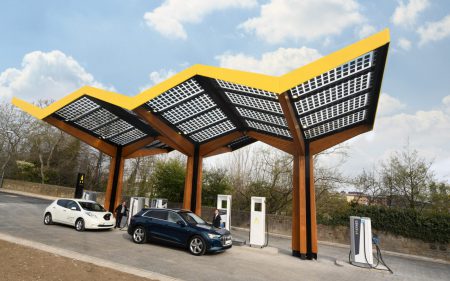Executives from National Grid and home battery firm Moixa discuss the challenges
It has been clear for a while now that electric vehicles are coming. If the sales charts and chatter on social media weren’t clues enough, the UK government’s announcement of a 2030 ban on the sale of new ICE cars is the future writ large in bold font. But as Brits start to buy more EVs, many people are worried about the infrastructure to charge them and whether it can cope.
Will the UK’s transport network give us the flexibility we currently enjoy from our cars? In the latest of our Autocar Business Live webinars, sponsored by NewMotion, some of the fog was cleared by our guests: Graeme Cooper, National Grid’s project director for transport decarbonisation, and Ben Fletcher, EV project lead at Moixa, a clean-tech software company working specifically with home batteries.
Some EVs, such as the Nissan Leaf, can serve as a storage medium. Will all cars act as storage devices in the future?
Fletcher said: “This is known as vehicle-to-grid [charging]. The car can take power from the grid or provide it back into the house. There are huge advantages to this, but there are a number of challenges around it. There are some hardware costs – it isn’t just a normal charge point, so that’s a bit more expensive – and there’s also a different way that the driver thinks of the vehicle. They need to be incentivised to be plugging in their car at all times, rather than just when they want it to be taking a charge.”
Cooper added: “There’s societal behaviour with this. I’m three years and 40,000 miles into EV ownership, and when I first had it, I plugged it in every night; now I only plug it about once a week. And if it’s not plugged in, it’s not visible and not controllable.
“We need behavioural scientists to look at this: when you ask people when they use their car, it’s 5.30 to 7.30 on a cold, wet winter’s commute. When does the grid most likely need power out of the battery? At 5.30 to 7.30 on a cold, wet winter’s day. Is this [vehicle-to-grid] going to be big or small? I think the jury is out on that. But one thing I would say is that flexibility is going to be critical. If we’ve got more variable generators like wind or solar, what you need is consumption that turns up or down when that is happening.

Why won’t there be blackouts?
Cooper answered: “Because we [National Grid] are a monopoly, we work to a standard that’s administered by Ofgem, the regulator, and we live up to a 99.99987% reliability; that’s seven seconds a year. When we look forward to what’s coming – more EVs, more electrification of heat – yes, the grid and the energy market will change. But this is a managed transition that doesn’t happen overnight. So we plan for it, we watch for it, we even advise: The people in the National Grid Electricity System Operator do a forward forecast every year called the Future Energy Scenarios that says what we think is coming and how we manage it. The uptake we’re seeing in electric cars now isn’t a surprise.
Is there enough time before 2030 to get it all ready?
Fletcher said: “As somebody who has been involved with the EV market for quite a long time now, what’s interesting is that the ‘hockey stick’ we see with the vehicles [slow growth of sales morphing into rapid uptake] is actually following a similar trend that we see in the number of charge points that are out there. The more people buy EVs, the greater the market there is for people to be charging those cars.
Cooper added: “By 2030, we will have 40GW of off-shore [energy generation capacity] installed in the UK. That’s an additional 30GW on top of what we already have today. Now, that in itself means we need more smart consumption to match that, so the two things go lock-step together. There will be the right wires to do off-shore wind and the right wires to do EV charging. The energy market will grow because of electrifying more things.
“The government has a policy called Project Rapid, which is high-power, on-route charging. They also have £950 million funding in place, and that’s to make sure that at every motorway service area in England, there’s adequate futureproofed capacity for everybody to go clean transport. You will start to see futureproofed grid capacity going into these services.”
What speed does my home charger need to provide?
Cooper said: “If you’re thinking about fuelling an EV like you would a petrol car, then all of this is lost on you. Cars are stationary for 96% of the time, so what you actually want to do is charge the car while it’s parked – so overnight or while you’re in an office. Charging a car fast is actually the wrong thing to do. I come home and once a week, I plug the car in and it charges at 7kW. By the morning, the car is full.”
Fletcher agreed: “You should always be doing something else while your car is charging. So the opportunity gain you get between a 22kW charger and 7kW charger is pretty small, because most people sleep overnight and that’s the time it will take to charge. I’ve never found a [charging] point where 7kW wasn’t adequate for what I needed to do with the car.”
Read more: AUTOCAR
It’s Time to Go Green!
If you would like to know more about Solar Panels and the PowerBanx range of home battery systems, and get a free instant quote, please complete our online form:

